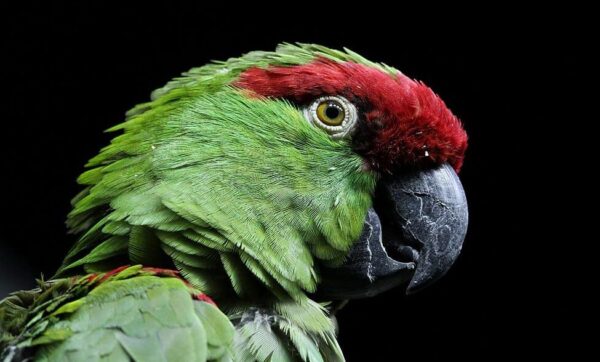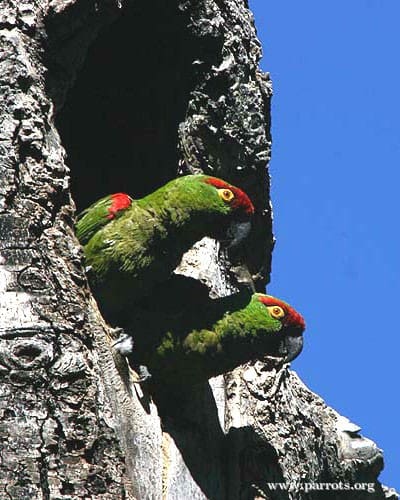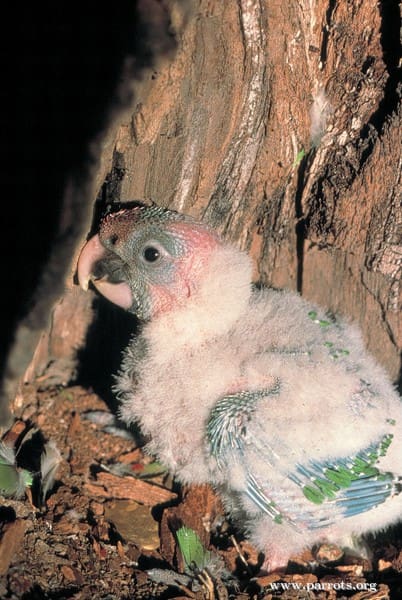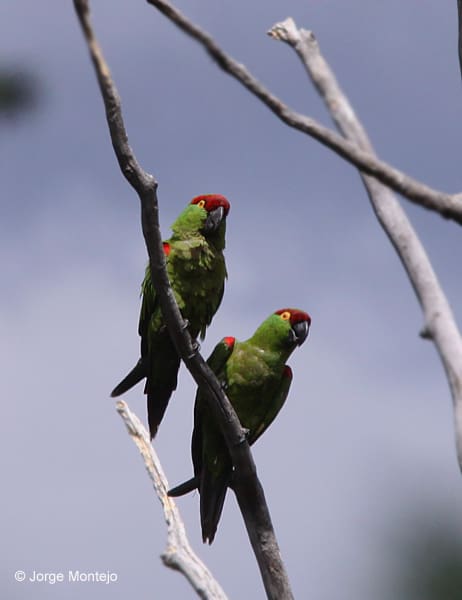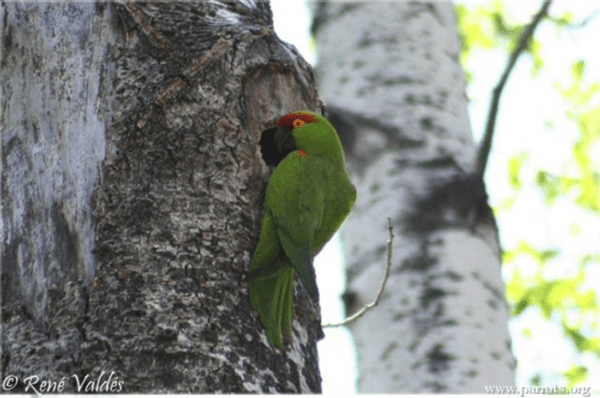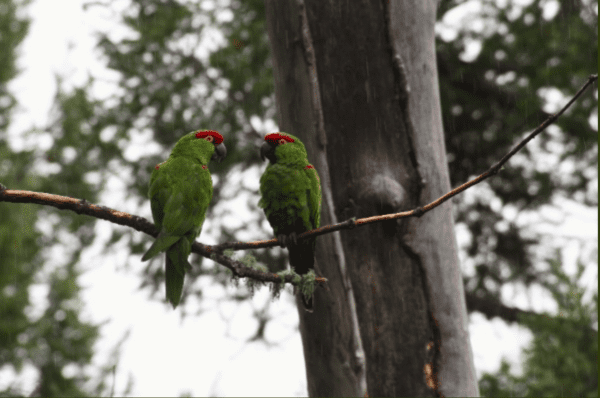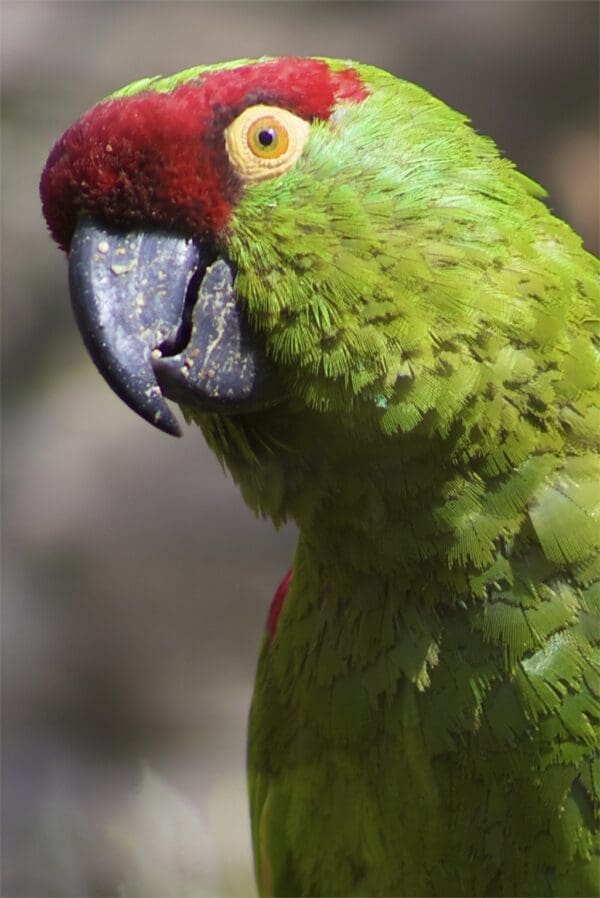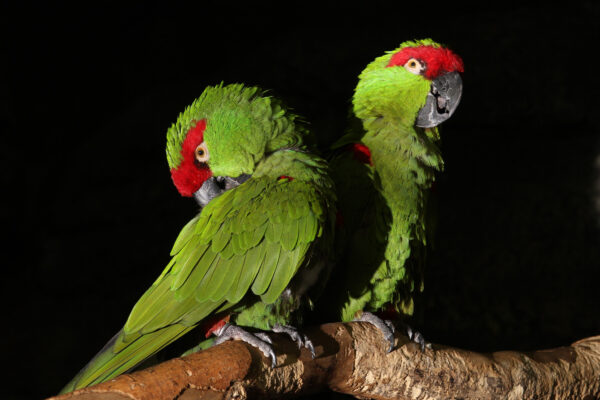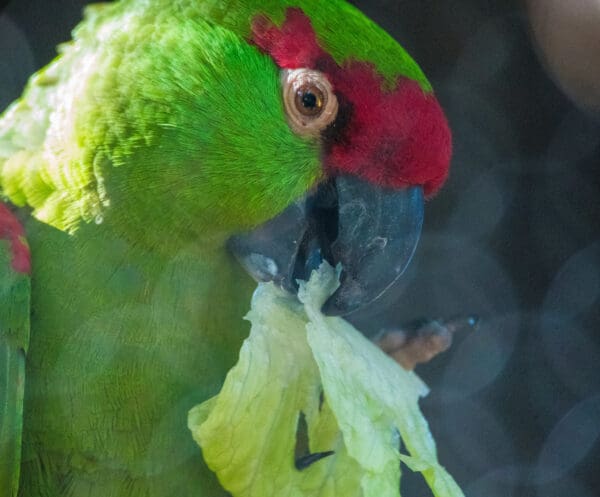Thick-billed Parrot
Also known as:
Thick-billed Macawlet
Also known as:
Thick-billed Macawlet
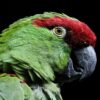
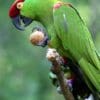
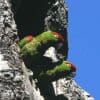

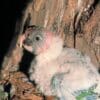

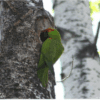
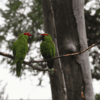
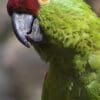
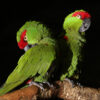
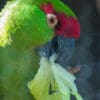

DID YOU KNOW?
References in an account of the Espejo Expedition of 1582-1583 point to Thick-billed Parrots occurring in N Arizona.

Rhynchopsitta

pachyrhyncha
Size:
38 cm (14.8 in)
Weight:
300 g (10.5 oz)
Subspecies including nominate:
one
Colour Adult:
Both adults vivid green in colour; with yellow on cheeks and ear coverts; red forehead, forecrown and stripe over eye, as well as bend of wing, carpal edge and thighs; yellow greater underwing coverts. Beak black. Eye ring bare and brown/yellow. Eye orange/yellow.
Colour Juvenile:
As in adult but with horn-coloured beak with stripe; stripe over eye absent; green instead of red on bend of wing and carpal edge; minimal red on thighs.
Call:
Different sceeches, screams, shrieks and squawks. Similar to macaw but high-pitched.
More Information:
Content Sources:
CITES
Avibase
BirdLife International
Cornell Lab of Ornithology/Birds of the World
A Guide to Parrots of the World, Juniper and Parr, 1998
Parrots: Status Survey and Conservation Plan 2000-2004, Snyder, McGowan, Gilardi and Grajal, 2000.
Parrots of the World, Forshaw and Cooper 2010 edition
Vanished and Vanishing Parrots, Forshaw, 2017.
Parrots of the World, Forshaw, 2006.
Parrots in Aviculture, Low, 1992.
Psittacine Aviculture, Schubot, Clubb and Clubb, 1992.
Captive Status:
Rare
Longevity:
—
Housing:
Walk-in aviary, minimum length 4.5 m (14.7 ft).
Diet:
Soaked or sprouted sunflower seed; walnuts, pinenuts, pecans, fresh corn, fruit and vegetables. Complete kibble.
Enrichment:
Sterilized pine cones, other wood chewables such as fir, pine, willow and elder branches, wood block toys, vegetable tanned leather toys. Also enjoys bathing, so provide overhead misters or shallow water bowls.
Nest Box Size:
Vertical box 12″ x 12″ x 24″ (30.5 cm x 30.5 cm x 61 cm).
Clutch Size:
2 to 4
Fledging Age:
8-9 weeks
Hatch Weight:
—
Peak Weight:
—
Weaning Weight:
—
World Population:
840-2800 mature individuals, decreasing.
IUCN Red List Status:
Endangered
CITES Listing:
Appendix I
Threat Summary:
The distribution of this species covers only 600 km2. Is affected by the degradation of its habitat and loss of pine trees from harvesting; also loss of trees due to drug growers and cattle farming. Compounding these losses is the disappearance of aspen trees for nesting. Shooting is a major factor affecting Thick-bill historically, and trapping for the pet trade appears to have caused declines only in Mexico in recent decades. In addition, climate change may impact habitat availability, particularly during the breeding season.
Range:
Highlands of NW and C Mexico in the Sierra Madre Occidental. Re-introduced to S Arizona.
Habitat:
Mature upland primary growth pine forests; occurs mainly from 1500-3000 m (4920-9840 ft).
Wild Diet:
Diet includes seeds of pine species-Arizona pine, Mexican white pine, Durango pine, Mexican piñon pine, ocote Pinus teocote and weeping pine P. lumholzi. Occasionally items like cherry fruits Prunus capuli, terminal buds of various pines, and seeds of an unknown leguminous plant are taken. Have been observed using clay licks. Also observed raiding acorn granaries of Acorn Woodpeckers Melanerpes formicivorus.
Ecology and Behaviour:
Ranges widely after breeding; occurs in flocks with communal roosting on inaccessible cliffs or densely packed trees. Travels up to 40 km in a day to foraging areas.
Clutch and Egg Size:
2 to 4 rounded to ovate shaped eggs, 39.0 x 30.0 mm (1.5 x 1.2 in).
Breeding Season:
Breeding coincides with pine seed ripening; eggs laid June to July. Nest is in tree hollow.
Related Links:
—
